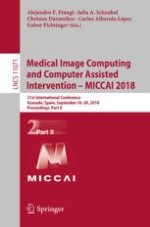2018 | OriginalPaper | Buchkapitel
Computational Heart Modeling for Evaluating Efficacy of MRI Techniques in Predicting Appropriate ICD Therapy
verfasst von : Eranga Ukwatta, Plamen Nikolov, Natalia Trayanova, Graham Wright
Erschienen in: Medical Image Computing and Computer Assisted Intervention – MICCAI 2018
Aktivieren Sie unsere intelligente Suche, um passende Fachinhalte oder Patente zu finden.
Wählen Sie Textabschnitte aus um mit Künstlicher Intelligenz passenden Patente zu finden. powered by
Markieren Sie Textabschnitte, um KI-gestützt weitere passende Inhalte zu finden. powered by
